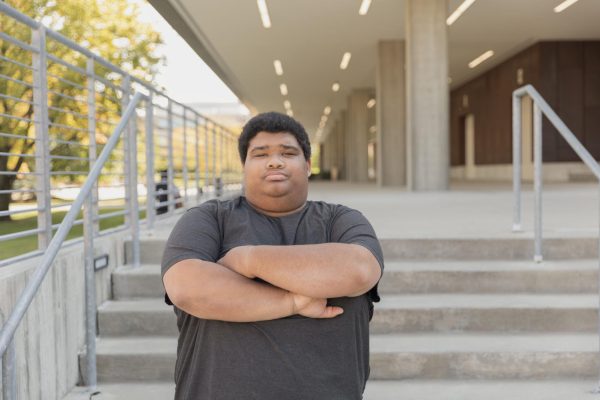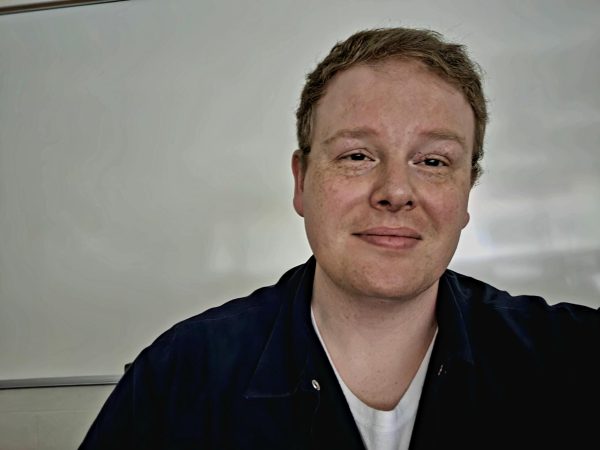Letter to the editor: It’s time for Oakland University to put its money where its mouth is
Oakland University’s mission statement is centered on how it “cultivates the full potential of a diverse and inclusive community. As a public doctoral institution, we impact Michigan and the world through education, research, scholarship, and creative activity.”
It’s time for Oakland University to put its money where its mouth is, because its administration has lost sight of their true purpose.
In the university’s 2020 Financial Statement, it was noted that “the University’s largest asset is its investment in capital assets, including land, land improvements, infrastructure, buildings, equipment, library acquisitions, and construction in progress.” True to form, every year I have taught at OU (since 2014), there has been a major construction project obstructing a significant aspect of campus impeding pathways, parking, and building space. The Oakland Center has been remodeled twice; I’ve seen a new parking structure; dorm rooms with classrooms; a more expansive coffee shop in the library.
But in the 8 years I’ve taught for the Writing and Rhetoric department – and the Center for Multicultural Initiatives CORE bridge program – neither department or program has seen a remodel, so to speak, on education, or research, or scholarship.
In 2017, WRT struggled to find adequate office space for their 33+ special lecturers. We have one large room in O’Dowd Hall and one in Dodge Hall; neither is big enough to accompany the number of SLs who need office space. Many of us meet with students in coffee shops or the OC, and while this is fine for general discussion about class, it fails to offer privacy for sensitive issues, or fulfill a sense of belonging or professionalism a university might want to provide for their students and faculty alike.
Now South Foundation Hall is set for construction; a building where many WRT courses are taught. This has resulted in a shortage of classroom space among departments, creating more hybrid classes and confusion: if I teach a MWF class, I only have my classroom on Monday; someone else will have the classroom Wednesday and Friday.
Working with CMI in the duration of my career at OU has helped me greet some of our incoming freshmen who will immediately take first-year writing from the WRT department. Each year, when the CORE program ends, the instructors write a collaborative report analyzing the success of the students and include recommendations to strengthen its success. And each year, my colleague (another WRT SL) and I ask for additional funding in order to extend the program for more students, to earn course credit, and to fund the extra instruction. I know it is also a standing goal of the senior director to expand; either more students, longer instruction, or both. We have been able to increase the pay/number of ambassadors and increase the number of students from 50 to 60.
I would have greater faith in this university if it really served those who “took one for the team”; if those hits were temporary, but they aren’t. I don’t have adequate working space; an issue we were assured was temporary, but our 2-3 years of inadequate office space is going on 5 and now I don’t have adequate classroom space. Within that classroom, there isn’t any protocol for mandates, testing, or holding class during a pandemic that has been ongoing for more than a year, and classes are meant to start tomorrow.
And this year, when our bargaining team asked for a raise and retirement benefits for Special Lecturers – concepts we have been told to table for years because it “wasn’t the time”- the union was made to look like we were the ones trying to add a detrimental cost to the university. In their bargaining diary, the phrase is “burdensome proposal”.
I, and my colleagues, are not a burden to the university.
Myself and my colleagues are worth more than asking for office space, for classrooms, for a voice – aspects any professional has within their position.
For a university that says it values education, research, and scholarship, but has a campus comprised of 48% part-time faculty and offers a pittance in salary increase, benefits, or basic needs in campus resources – it is not a university that values education. When (at least) one of their programs on campus is responsible for a significant percentage increase in first year retention rates (CORE saw 54% retention in 2011; 72% by 2019), and 6-year graduation rates (CORE saw 18% graduation rates in 2011; 40% by 2014) but cannot expand its programming, that university does not value scholarship.
When that same university hemorrhages money to its top administrative staff by $8 million and counting (the President’s cabinet on down through the Director of the Athletic Office; 49 salaries), with a new construction project to follow the last, that university values money.
Students who are coming here for a quality degree in a program they chose specifically for this campus deserves to know where this administration has taken a stand.
For each and every colleague and student who has fought for more – thank you,
Karen Brehmer






Steph • Sep 2, 2021 at 11:51 AM
I’ve created a petition that anyone can sign, in solidarity with faculty. The link to sign and share is https://bit.ly/OUAAUPcn
anonymous • Sep 2, 2021 at 11:43 AM
https://oakland.edu/Assets/Oakland/uhr/files-and-documents/2021-Benefits/BenefitSummaries-2021/Executive%20Employees%20Benefit%20Summary.pdf?fbclid=IwAR0PtTPlUGKwDrgNEB_QEzFfZru3UGfrF998zAO3uSKQ-KPS_5FErUcfVGg
Am I correct in reading this? All these over-paid VPs are also entitled to “car allowances” Like who does this apply to?